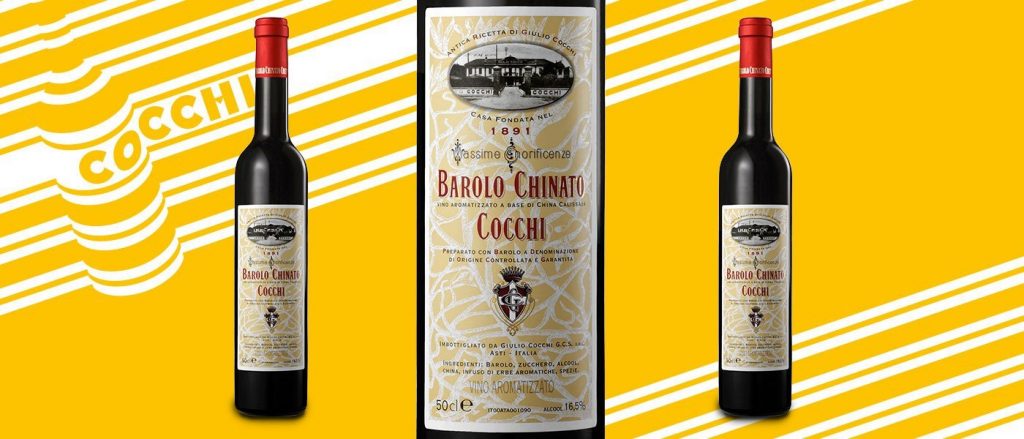Barolo Chinato: An Exploration of Italy’s Unique Aromatic Wine
Unearth the secrets of Italy’s wine tradition with a deep dive into Barolo Chinato, an aromatic delight that is as much a sensory experience as it is a historical journey. This distinctive wine, produced in the hills of Piedmont, marries the robustness of Barolo wine with the enchanting complexity of quinine bark. In this comprehensive guide, we’ll navigate through its intriguing history, production process, tasting profiles, and more, providing an all-encompassing exploration of Barolo Chinato.
Barolo Chinato
| Step in Production | Description |
|---|---|
| Selection of Base Wine | Choosing a well-structured Barolo wine |
| Creation of Herbal Infusion | Mixing a variety of herbs and spices, primarily Cinchona bark |
| Infusion Process | Adding the herbal infusion to the wine and allowing it to steep |
| Sweetening | Adding sugar or must to balance the bitterness |
| Aging | Maturing the wine in barrels for added complexity |
| Bottling and Further Aging | Final stage to allow flavors to continue to develop |
Barolo Chinato is a type of aromatic wine that originates from the Piedmont region in Italy. It’s created by infusing Barolo wine with a variety of ingredients including quinine bark, sugar, and a secret mix of herbs and spices, resulting in a drink that is both bitter and sweet, and utterly unique. Often served as a digestif, Barolo Chinato is noted for its complexity and depth of flavor, and is a testament to the rich wine heritage of Italy.
History of Barolo Chinato:
The history of Barolo Chinato takes us back to the end of the 19th century in Italy, a period characterized by great creativity and innovation in the field of winemaking. This period saw the development of several new types of wine, among which Barolo Chinato stands out for its originality and distinctiveness. The origins of Barolo Chinato are credited to a pharmacist and winemaker named Giuseppe Cappellano, who was based in the city of Turin, the capital of Piedmont region. Giuseppe was known for his passion for botany and pharmacology, which he applied to the creation of wines with unique characteristics. The idea of Barolo Chinato came about as a blend of Giuseppe’s pharmaceutical knowledge and the culture of Piedmont. At that time, quinine bark was used for its medicinal properties, particularly for the treatment of malaria. Giuseppe, in a stroke of genius, decided to infuse the quinine bark into the region’s prized Barolo wine, along with a mix of other locally sourced herbs and spices. Thus, Barolo Chinato was born.
Barolo Chinato was initially marketed as a medicinal tonic due to its quinine content. The bitter characteristics of the quinine were thought to have healing properties, and it was not uncommon for such tonics to be consumed for their supposed health benefits. However, over time, the appreciation for Barolo Chinato’s unique flavor profile grew, and it began to be enjoyed as a wine in its own right. Despite its unique taste and interesting history, Barolo Chinato remained relatively unknown outside of Italy for many years. It is only in the last few decades that it has started to gain recognition internationally, as more and more wine enthusiasts discover and fall in love with this aromatic and complex wine.
In conclusion, Barolo Chinato’s history is deeply intertwined with the rich cultural and medicinal history of Piedmont. The creation of this aromatic wine is a testament to Italian creativity, blending traditional wine-making techniques with innovative ideas, and resulting in a wine that truly stands out for its complexity and uniqueness.
Cocchi Barolo Chinato
History and Production: Cocchi is a renowned producer in the Piedmont region of Italy, known for their high-quality wines and vermouths. Their Barolo Chinato follows the traditional production process, using a base of Barolo wine and infusing it with a selection of botanicals that includes cinchona, rhubarb, and gentian root.
Tasting Profile: Cocchi Barolo Chinato boasts a complexity that’s characteristic of this type of wine. On the nose, expect aromatic intensity with notes of red fruit, orange peel, and spices from the botanicals. On the palate, Cocchi’s version is robust and full-bodied, yet well-balanced with a smooth interplay of sweetness and bitterness. It finishes with a lingering aftertaste, leaving a warm and pleasant sensation.
Serving Suggestions: Cocchi Barolo Chinato can be enjoyed in various ways. It serves as an excellent digestif, perfect after a hearty meal. It can also pair well with desserts, particularly those with dark chocolate. Some also enjoy Cocchi Barolo Chinato slightly chilled, to bring out more of its nuanced flavors.
In summary, Cocchi’s take on Barolo Chinato is a testament to the quality and complexity of this unique wine. With its depth of flavors and versatility, it’s a delight for any wine enthusiast.
| Cocchi Barolo Chinato | Description |
|---|---|
| History and Production | Made by the renowned Cocchi producer using Barolo wine and a variety of botanicals |
| Tasting Profile | Aromatic, full-bodied, and well-balanced with a smooth interplay of sweetness and |
Barolo Chinato Production Process:
The production of Barolo Chinato involves the maceration of quinine bark along with other herbs and spices in Barolo wine. This mix is then aged, and sugar is added to achieve a balanced final product. Here’s a detailed description of the Barolo Chinato production process:
- Selection of the Base Wine: The process begins with selecting a high-quality Barolo wine. Barolo is a rich, full-bodied red wine made from Nebbiolo grapes grown in the Langhe region of Piedmont, Italy. The chosen wine is typically well-structured with noticeable tannins, as these characteristics can stand up well to the infusion process.
- Creation of the Herbal Infusion: The distinctiveness of Barolo Chinato comes from its infusion with a variety of herbs and spices, the most significant being Cinchona bark, from which the wine derives its name (“Chinato” comes from “China”, the Italian name for Cinchona). Cinchona bark contains quinine, giving the wine its characteristic bitter taste. The other botanicals used vary from producer to producer, and may include ingredients like rhubarb root, gentian, cloves, cardamom, and orange peel.
- Infusion Process: The selected herbs and spices are macerated in high proof alcohol, typically grappa or a neutral spirit, for a number of weeks to allow the flavors and aromas to be fully extracted. This mixture is then added to the Barolo wine and left to infuse for a further period, often several months.
- Sweetening: Barolo Chinato is a sweet wine, so once the infusion process is complete, sugar or must is added. The amount of sweetness can vary based on the producer’s style, but it’s generally balanced by the bitterness of the Cinchona and other botanicals.
- Aging: The resulting wine is then aged in barrels for a period of time. The length of aging varies, but it can be up to several years depending on the winemaker’s preference. This aging period allows the flavors to meld and mature, and contributes additional complexity to the final product.
- Bottling and Further Aging: After barrel aging, the Chinato is filtered and bottled. Like Barolo itself, Barolo Chinato can benefit from further aging in the bottle, allowing its flavors to continue to evolve and develop over time.
In conclusion, the production of Barolo Chinato involves a delicate balance of infusion and aging processes. Each producer’s secret blend of botanicals and specific production methods contribute to the wide range of flavors and styles found in Barolo Chinato wines.
Barolo Chinato Tasting Profile:
| Tasting Profile | Description |
|---|---|
| Appearance | Deep garnet color |
| Aroma | Red fruit and herbal, earthy notes |
| Palate | Balance of sweet and bitter flavors |
| Finish | Long, nuanced finish with lingering complexity |
The tasting profile of Barolo Chinato is quite unique and complex, given its blend of quality Barolo wine with a variety of botanicals. Here’s a brief overview of what you can expect from this exquisite wine:
- Appearance: Barolo Chinato typically presents a rich, deep garnet color, similar to the Barolo wine it originates from. It’s visually appealing and suggestive of the robust flavors that follow.
- Aroma: The aroma of Barolo Chinato is a complex tapestry of scents. Expect a symphony of red fruit (such as cherries and plums), alongside the herbal, earthy notes from the infused botanicals. These can include cinnamon, rhubarb, and even hints of mint or gentian.
- Palate: On the palate, Barolo Chinato is an intriguing balance of sweet and bitter. The rich flavors of the Barolo wine provide a sweet, fruity base, which is then counteracted by the bitter notes from the botanical infusions. This gives it an almost amaro-like quality, while still retaining the familiar characteristics of a well-aged wine.
- Finish: The finish of Barolo Chinato is typically long and nuanced. The sweet-bitter balance continues, with a lingering complexity that invites contemplation.
In conclusion, the tasting profile of Barolo Chinato is a complex journey of flavors. Its uniqueness lies in the harmony of the rich Barolo wine and the distinctive array of botanicals used in its production.
How to Enjoy Barolo Chinato:
| Tips to Enjoy | Description |
|---|---|
| Temperature | Serve slightly chilled, around 16-18°C |
| Glassware | Use a tulip-shaped, stemmed wine glass |
| Pairings | Pairs well with desserts, chocolates, and cheeses |
| Cocktails | Can be used in cocktail recipes |
| Savor It | Enjoy slowly to appreciate its complex flavor profile |
Enjoying Barolo Chinato can be a unique and rewarding experience, given its intricate flavor profile and the richness that it offers. Here are some tips on how to best enjoy this distinctive wine:
Temperature: Serve Barolo Chinato slightly chilled, but not cold. A temperature of around 16-18°C (60-64°F) is ideal. This temperature helps to emphasize the wine’s aromatic complexity.
Glassware: Use a stemmed wine glass to serve Barolo Chinato. A tulip-shaped glass is perfect for enhancing the aromatic profile of this complex wine.
Pairings: Due to its balance of sweetness, bitterness, and rich flavors, Barolo Chinato pairs well with a wide variety of dishes. It’s traditionally served as a digestif after a meal, often alongside dessert or chocolate. Its bitter-sweet flavor profile also makes it an excellent match for cheese boards, especially with blue cheese or aged hard cheeses.
Cocktails: Barolo Chinato is not just for sipping – it can also be used as an ingredient in cocktails. It adds complexity and depth to many classic cocktail recipes. Try substituting it for vermouth in a Negroni or a Manhattan for a unique twist on these classic drinks.
Savor It: Lastly, remember to savor Barolo Chinato. Its layers of flavor are meant to be enjoyed slowly, allowing you to fully appreciate the complexity that comes from the combination of high-quality Barolo wine and the unique blend of infused herbs and spices.
In conclusion, Barolo Chinato is a versatile wine that can be enjoyed in various ways. Its unique taste profile allows it to pair well with a variety of dishes, making it a delightful addition to any meal or occasion.
Buying and Storing Barolo Chinato:
This wine can be purchased from a number of online wine merchants as well as select local stores. Barolo Chinato should be stored in a cool, dark place to preserve its unique flavors.
“Italian Gentleman” – “Cocchi” – Vermouth & “Barolo Chinato” Italian Cocktail” & Vermouth

Conclusion:
The journey of exploring Barolo Chinato reveals not just the richness of its flavors, but also the wealth of tradition, history, and passion that underlies Italian wine culture. This unique aromatic wine, with its blend of bitterness and sweetness, is a testament to the innovative spirit of Italian winemakers and a must-try for all wine lovers.
